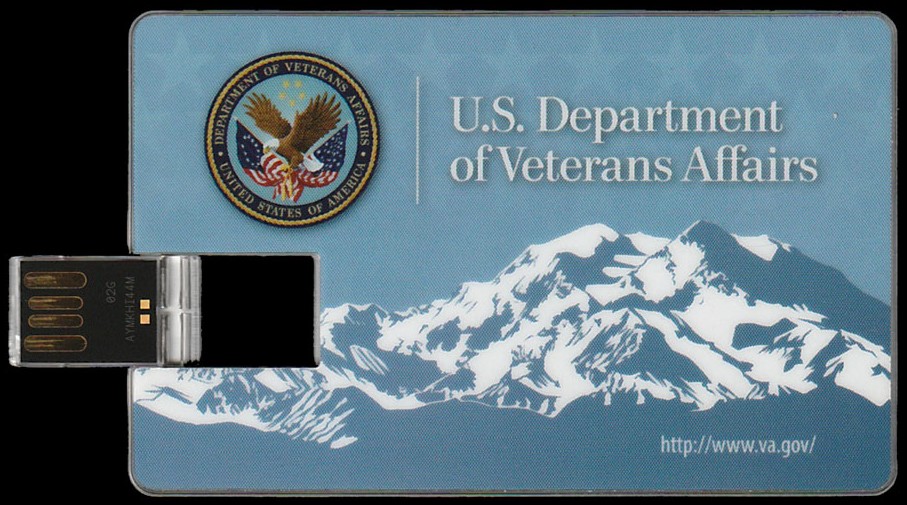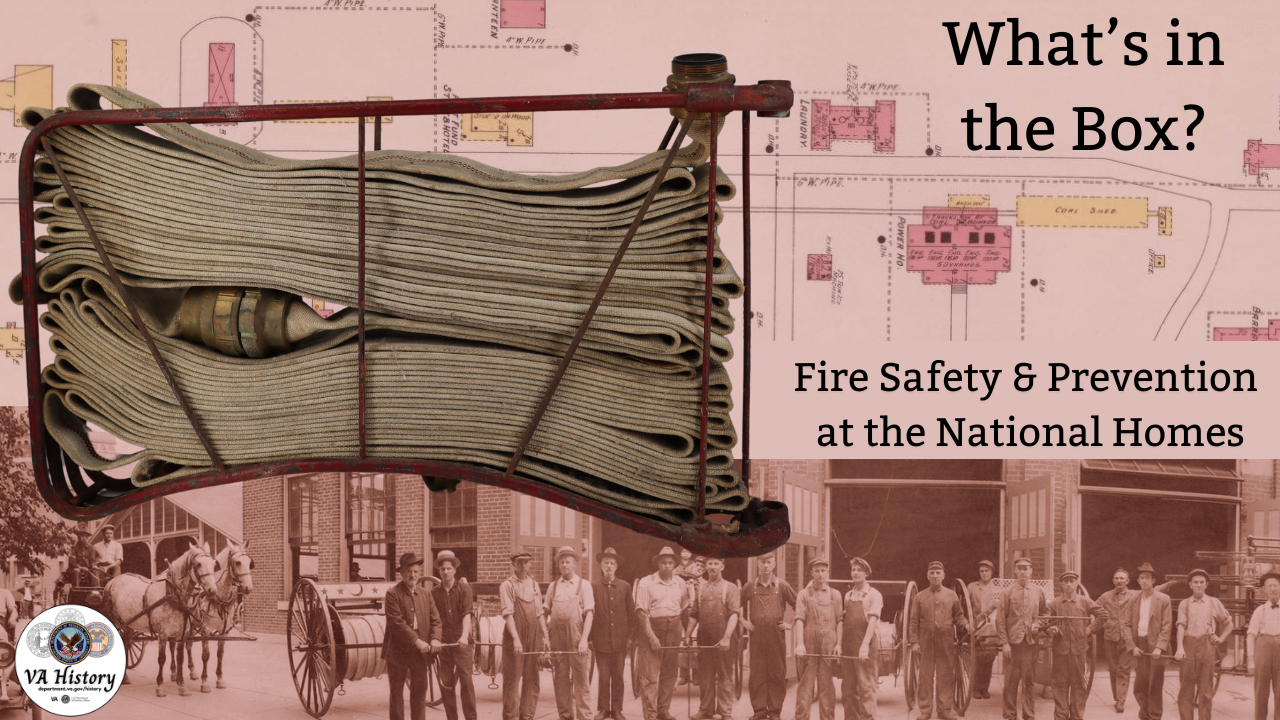
This collection came to us through coordinated team effort. I spent a few years in Alaska and never turn down an opportunity to tell those stories. While perusing VA Insider, I found an article on the Alaska Outreach Campaign, a June 2019 effort of Veterans Benefits Administration’s Benefits Assistance Service. One of the key features of this effort was the creation of some 4,500 USB drives that allowed VA staff to process claims on site, and in some cases, pay them out immediately.
I contacted the project manager, Monica Rivera, and after a delightful conversation, Monica promised to track down as much as she could. Transferring photos and other digital materials was easy but the agency was still very much in a telework posture, so the USB was a bit more of a challenge. Later in the year, the History Office’s Museum Core Project Team met in DC. Monica was able to coordinate with her colleague, Scott Posti, who was kind enough to bring me two of the drives up to the meeting room. This was when it got interesting.
The articles and all the conversation had referred to these as USB or flash/thumb drives. I was expecting the standard issue little box-shaped drive that fits in the side of the computer – the kind I can never plug in correctly the first time. Anyone that has spent time in Alaska will tell you we have our own way of doing things, and this was absolutely no exception. This is what Scott put in my hand.
It has the same texture as a PIV or CAC card and is about the thickness of two of them stacked together but does not fit in the reader slot. Clearly, not a standard USB drive. A few weeks later, while on the phone with Robert Wood, IT Specialist at Dayton VA Medical Center, I held the card up and asked him about it. He wondered if the notched section on the left might pop out if a little bit of force was applied. Sure enough, it did!
This development led to being able to get the blank documents off the Drive and saved as part of the collection. It might surprise some, but the Archives routinely gets requests for copies of old forms, so we really wanted to be able to keep this set accessible. (Quick shout-out to VBA Compensation Service’s Kayce White, who has never failed to find a form we’ve requested.)
One may be wondering why the creation of these USB drives was necessary in the first place. With all of the ways the VA has to move information, it is a valid question. The short answer is that it just doesn’t always work like that in Alaska. Alaska has 348 communities and just under half of them are accessible only by air or water. In some areas, reliable internet connections are not guaranteed, and the weather rules just about everything. The four sites selected for this trip were Anchorage, Palmer, Delta Junction, and Fairbanks. In this case, everything is accessible by road, but all 4 sites are close to active or reserve military bases, with good population of Veterans in need of services. The result of this effort was 180 new claims, some of which were adjudicated then and there. Veteran Service Organizations, as well as community collaborators attended round tables and information fairs, so the remainder of the drives, as well as more specific information could be brought back to other communities unable to attend.
If you would like to read more about this adventure, you can find that here: VA outreach campaign served four Alaska locations with claims clinics and benefits briefings – VA News. If you were part of this Campaign and would like to add to the story, please email Robyn at robyn.rodgers@va.gov.
By Robyn Rodgers
Senior Archivist, National VA History Center
Share this story
Related Stories

Curator Corner
The Story Behind the National Homes’ Seal
The National Home for Disabled Volunteer Soldiers turns 160 years old in 2025. The campuses are the oldest in the VA system, providing healthcare to Veterans to this day.
At the time of their establishment, they were the first of their type on this scale in the world. Within the NHDVS seal is the story that goes back 160 years ago.

Curator Corner
What’s in the Box? Fire Safety and Prevention at the National Homes
Fire safety may not be the first thing that comes to mind when thinking about Veteran care, but during the National Home for Disabled Volunteer Soldiers period (1865-1930), it was a critical concern. With campuses largely constructed of wooden-frame buildings, housing thousands of often elderly and disabled Veterans, the risk of fire was ever-present. Leaders of the National Homes were keenly aware of this danger, as reflected in their efforts to establish early fire safety protocols.
Throughout the late 19th century, the National Homes developed fire departments that were often staffed by Veteran residents, and the Central Branch in Dayton even had a steam fire engine. Maps from this era, produced by the Sanborn Map Company for fire insurance purposes, reveal detailed records of fire prevention equipment and strategies used at the Homes. These records provide us with a rare glimpse into evolving fire safety measures in the late 19th and early 20th Century, all part of a collective effort to ensure the well-being of the many Veterans living there.



